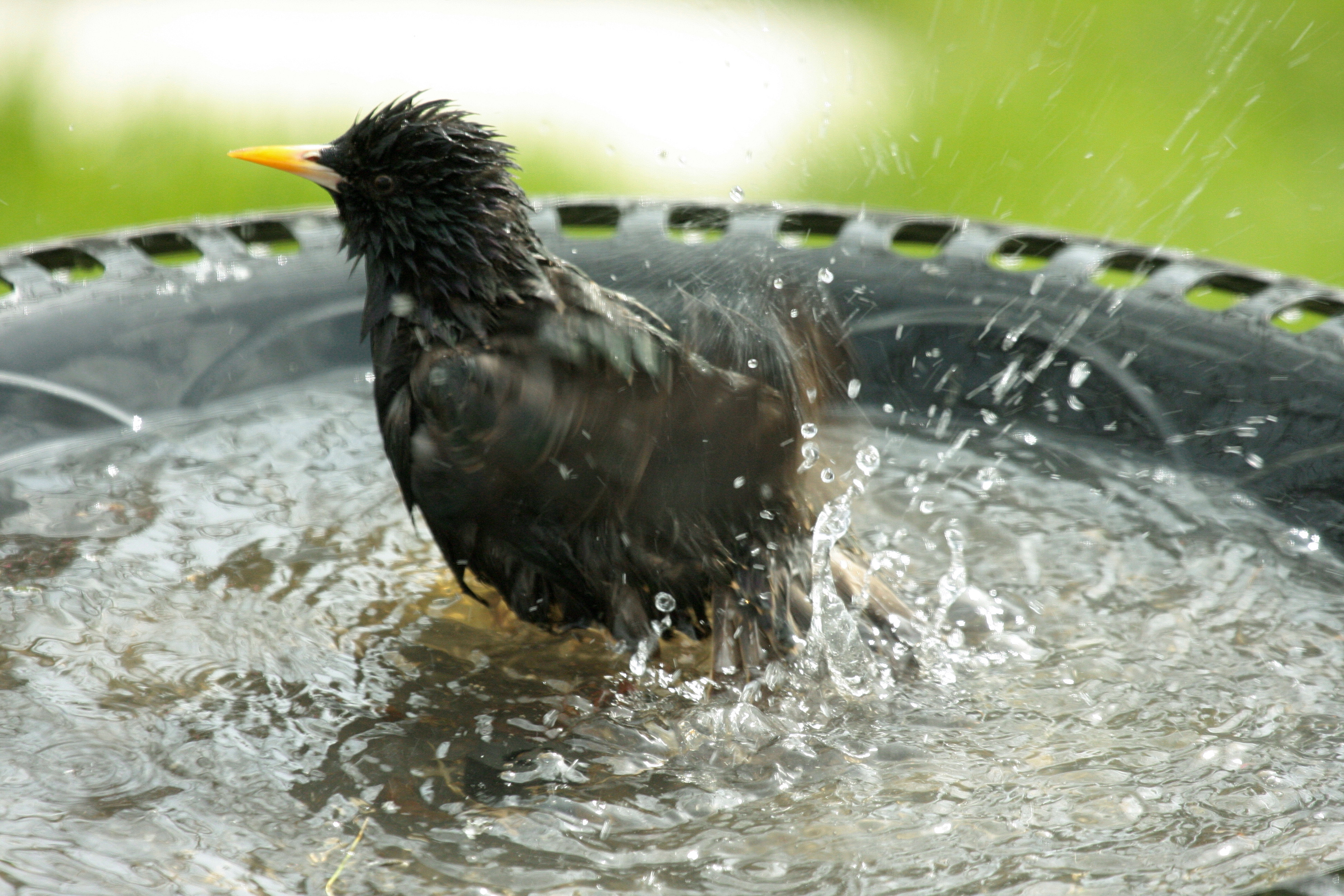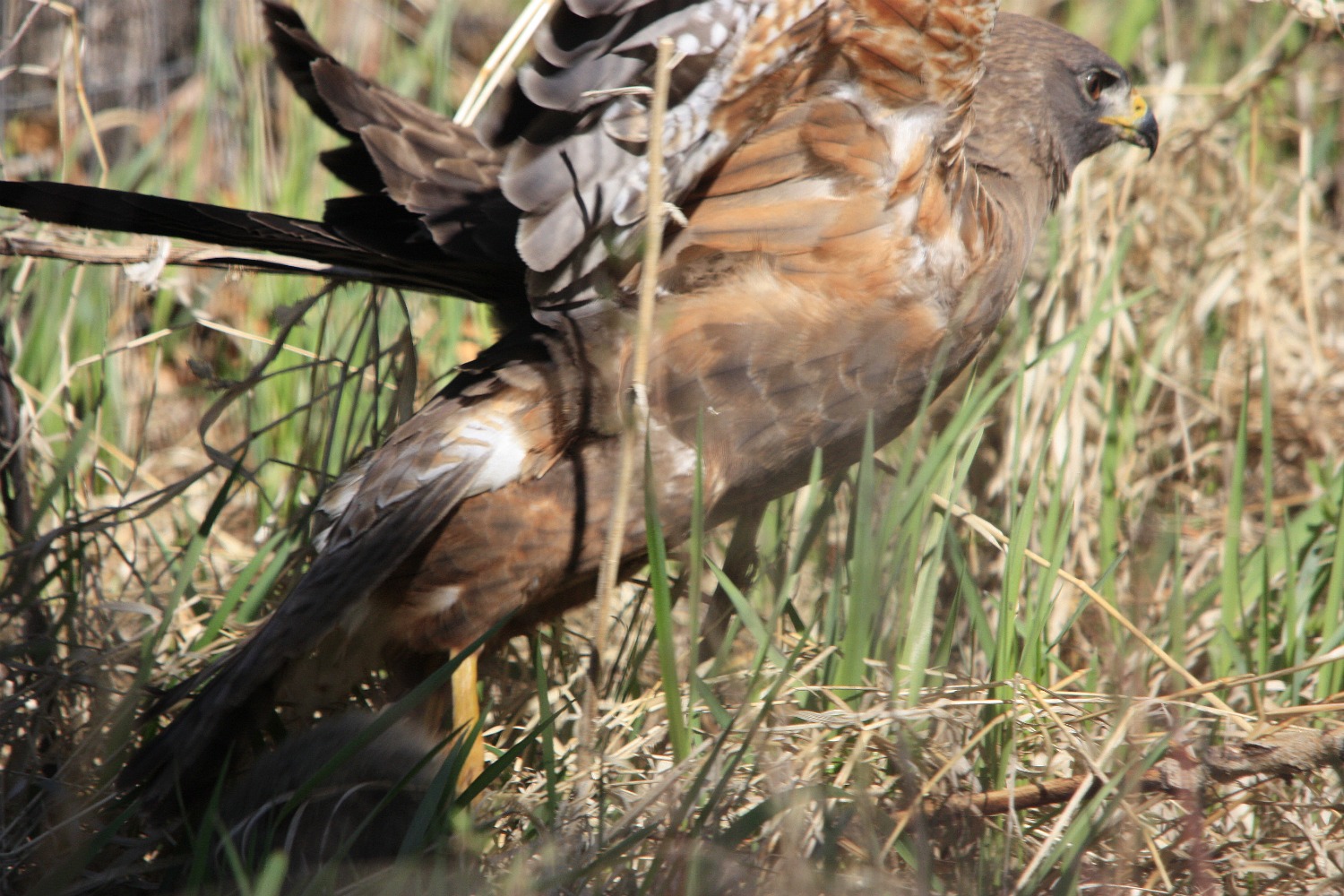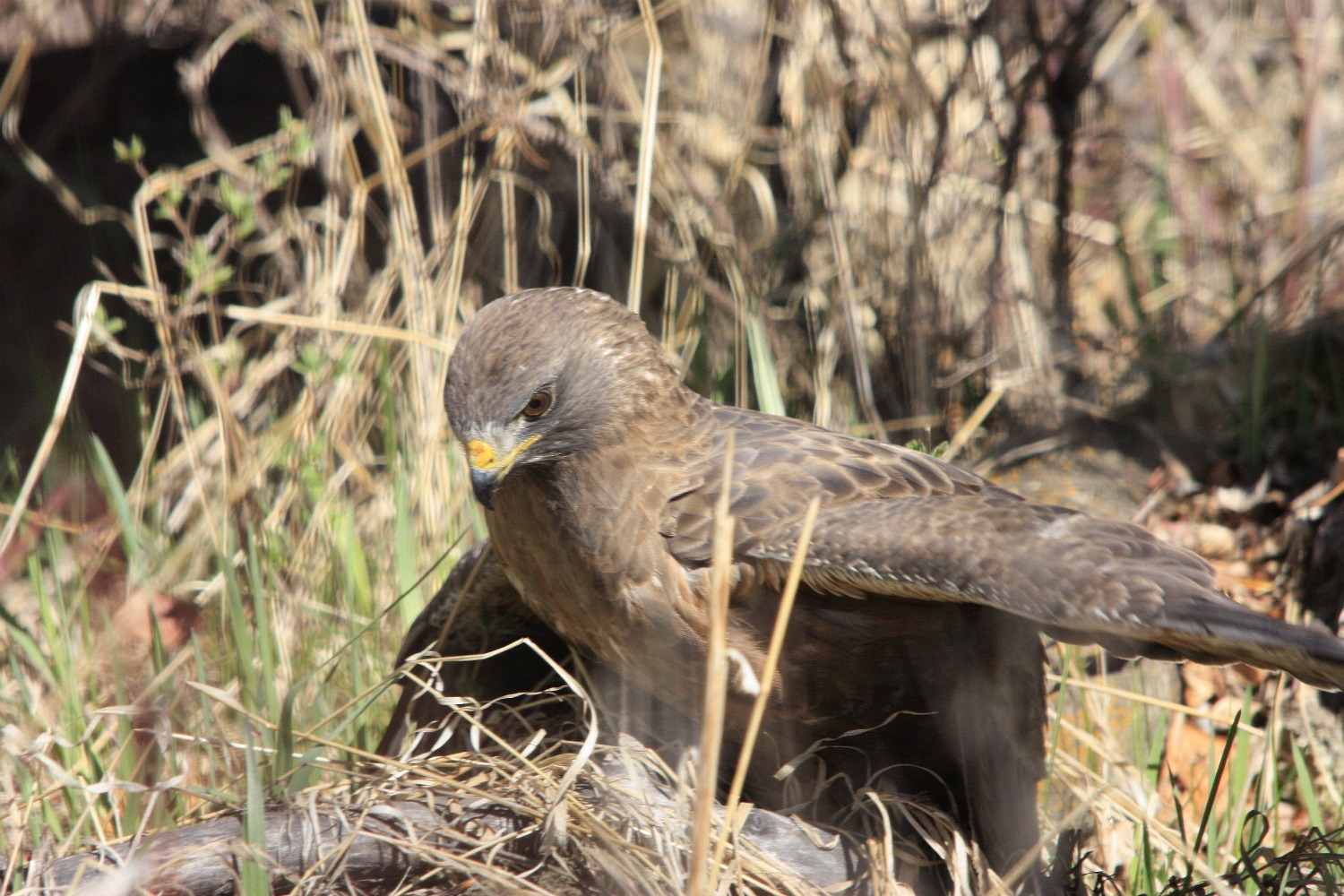More stunning photographs of birds in the Calgary area, this time sent to us by Terry Chiddy. Thanks for sharing! Click pictures for a larger view.
Tag Archive | calgary bird blog
Bird Profile: Black-crowned Night-Heron
Herons are elegant birds, wading through water with their long legs, waiting to plunge their beaks into the water to spear their next meal, be it a frog a mouse or a small fish. Yesterday, I visited Frank Lake, near High River, south of Calgary. While I was there, I saw several Black-crowned Night-Herons; a mostly nocturnal heron with relatively large eyes. The Black-crowned Night-Heron is a small, stocky bird with a greenish black crown and long, thin, white head plumes. A colonial species, the Night-Heron can be found roosting in trees near its hunting grounds during the daylight hours.
This immature Night-Heron has yet to grow the fancier plumage of the adult.
Unfortunately, we did not find a colony of roosting birds; we did however, find two birds together in the same small pond. What struck me the most was the herons’ bright red eyes. They certainly looked like they would be able to see in the dark!!!
An adult Black-crowned Night-Heron in search of lunch.
That beak and those claws are pretty intimidating; especially if you are on this guy’s menu!
Posted by Matthew Sim
Rare Bird Alert: May 19
Have you seen an unusual bird in Calgary? If it is a species on this Reportable_Birds (PDF), please report it to the Rare Bird Alert line at 403 221-4519 and leave a message after the beep at the end of the recording. If you would like some help with species identification, us email us at zoxox@shaw.ca To report injured wildlife call the Calgary Wildlife Rehabilitation Society at 403 239-2488, or the Alberta Institute for Wildlife Conservation at 403 946-2361.
This Bird Albert was recorded on May 19, 2011.
MAY 15
BLACK TERN – 6 reported by Dwight Knapik at the Calgary Zoo’s private facility just southeast of Calgary
RED KNOT – 2 by Richard Clarke at Kitsim Reservoir located in the southwest corner of the intersection of Hwys 36 and 539
BLACK-BELLIED PLOVER – 130 as above
MAY 16
SWAINSON’S THRUSH – Peter Roxburgh had one in his yard in Lake Bonavista
MAY 17
CALLIOPE HUMMINGBIRD – one seen in Weaselhead by Dwight Knapik
ROCK WREN – at Kinbrook Island Prov Park near Brooks, by RC
YELLOW-RUMPED WARBLER ( Audubon subspecies) – Corinne Griffon saw a male at Rge Rd 35 and Twp Rd 320 NE of Cremona
BLACK-BELLIED PLOVER – reported by Bill Wilson at the west end of Glenmore Reservoir
SEMIPALMATED PLOVER – 6 reported as above
SEMIPALMATED SANDPIPER – 25 as above
CASPIAN TERN – Terry Korolyk saw 2 at Glenmore Reservoir
GOLDEN EAGLE – 1 on Nose Hill reported by Gus Yaki
TURKEY VULTURE – 2 reported flying over Willowpark subdivision, seen by Matthew Sim
GLAUCOUS-WINGED-HERRING GULL hybrid – 1st yr reported by TK at Glenmore Reservoir
MAY 18
RED KNOT – 30 reported by RC at Kitsim Reservoir
BLACK-BELLIED PLOVER – 400 as above
LARK SPARROW – 1 reported at Kinbrook Island PP by RC
NORTHERN WATERTHRUSH – GY and a Nature Calgary group saw one at Inglewood Bird Sanctuary
BARN SWALLOW – several reports in the Calgary area
The next scheduled update of the bird alert is on Mon May 23.
Photo Feathers: Splish Splash
Rare Bird Alert Calgary: May 16
Have you seen an unusual bird in Calgary? If it is a species on this Reportable_Birds list (PDF), please report it to the Rare Bird Alert line at 403 221-4519 and leave a message after the beep at the end of the recording. If you would like some help with species identification, email us at us at zoxox@shaw.ca . To report injured wildlife call the Calgary Wildlife Rehabilitation Society at 403 239-2488, or the Alberta Institute for Wildlife Conservation at 403 946-2361.
This Bird Albert was recorded on May 16, 2011.
MAY 12
SEMIPALMATED PLOVER – 2 seen in the west end of Glenmore Reservoir by Gus Yaki and the Friends of Fish Creek PP Society (FCCPPS)
SEMIPALMATED SANDPIPER – 30 seen as above
TOWNSEND’S SOLITAIRE – 1 seen by David Pugh at Inglewood Bird Sanctuary (IBS)
SANDHILL CRANE – 2 at Winchell Lake reported by Ron Kube
MAY 13
SAGE THRASHER – one reported and photographed on private restricted access property moving along a fence along a range road east of Milo
YELLOW WARBLER – reported by Cedric and Robin Hitchon at Carburn Park
MEW GULL – adult at the west end of Glenmore Reservoir reported by Bill Wilson
MAY 14
STILT SANDPIPER – 26 reported by BW at the slough on TRd 232 east of the railroad tracks at Shepard
BLACK-NECKED STILT – 4 as above
WHITE-FACED IBIS – 1 as above
UPLAND SANDPIPER – on RR 250 at the southwest corner of Eagle Lake by Howard Heffler and Tony Timmons
NASHVILLE WARBLER – seen by Jim Davis at Hay Meadow at the Mt. Lorette Hawk watch site
SORA – heard by Terry Korolyk east of Shepard
MAY 14-15 (WEEKEND)
SANDERLING – in the Taber area reported by Lloyd Bennett
COMMON YELLOWTHROAT – 2 reports in our area
BROWN THRASHER – reported over the weekend
SPRAGUE’S PIPIT – as above
LOGGERHEAD SHRIKE – as above
BALTIMORE ORIOLE – as above
SPOTTED TOWHEE – as above
MAY 15
TREE SWALLOW – thousands seen by TK along the Bow River in east Fish Creek PP
BANK SWALLOW – as above
CASPIAN TERN – 2 seen by BW at the west end of Glenmore Reservoir
EURASIAN COLLARED DOVE – 2 seen by TK in balsam poplars south of the Bankside parking lot in east Fish Creek PP
The next scheduled update of the bird alert is on Thu May 19.
Hidden in Plain Sight
Canada Geese are abundant in Calgary year-round, and for the last month or so they have been nesting in various spots around the city. Like all birds, they try to find nesting sites that are secure from predators like coyotes. They will often nest on top of flat-topped buildings, and one of the best locations a goose can find is the top of a large broken tree.
Another good location is an island in a pond or the river. I’m always amazed at how difficult it can be to see the nesting goose even if it’s in the open like this…
Above, the male Canada Goose stands watch near the nest and is fairly conspicuous on the left-hand side of the gravel bar, but can you see the female on her nest?
There she is, on the right-hand side.
As seen below, it’s amazing how the colour pattern of a Canada Goose can allow it to blend in to its surroundings so that it is nearly invisible…
There are still plenty of geese on their nests in the city. I just saw my first goslings on Saturday, May 14, about ten days later than usual. For the next couple of months we will be treated to scenes like this:
Posted by Bob Lefebvre
Swainson’s Hawk
While we were at Inglewood Bird Sanctuary doing our Big Sit, we came across a very interesting sight. There, perched on the ground, maybe ten feet off the path, was a dark-morph Swainson’s Hawk. The dark-morph Swainson’s Hawk has a dark-brown colour over most of its body; the more common light morph has a brown bib contrasting with white underparts. This particular hawk had a Richardson’s Ground Squirrel clutched in his claws and was regarding all the photographers and interested visitors with a haughty look.

This Swainson’s Hawk intrigued many visitors to Inglewood Bird Sanctuary.
And there he sat; for over an hour we were told, he had stayed in the same spot. He finally got tired of all this hustle and bustle, deciding to try to find a quieter place to enjoy his meal in peace. However, he had not counted on catching such a heavy meal…
After he couldn’t achieve lift-off by taking a running leap, he tried a different tactic: taking off from the spot where he stood.

Flap!!!


Well that didn’t work either…
The hawk then decided that, seeing as he wasn’t going anywhere with his meal, he might try to eat it right then and there. And that’s what he did. He hopped back a couple of feet with his meal, to a slightly more secluded area and began to eat.
Here, he shields his meal from potential thieves.
Hopefully his meal didn’t weigh him down too much after he ate it; otherwise, he might not be able to take off again!!!
Posted by Matthew Sim
Big Sit results
A very windy morning was spent down at Inglewood Bird Sanctuary by us three bloggers; several people came by to join us. The large gusts of wind kept the birds down and hard to hear but we still had some great birds. From 8 -10 a.m., we counted birds down at the river recording 24 species of birds.
- Canada Goose
- American Wigeon
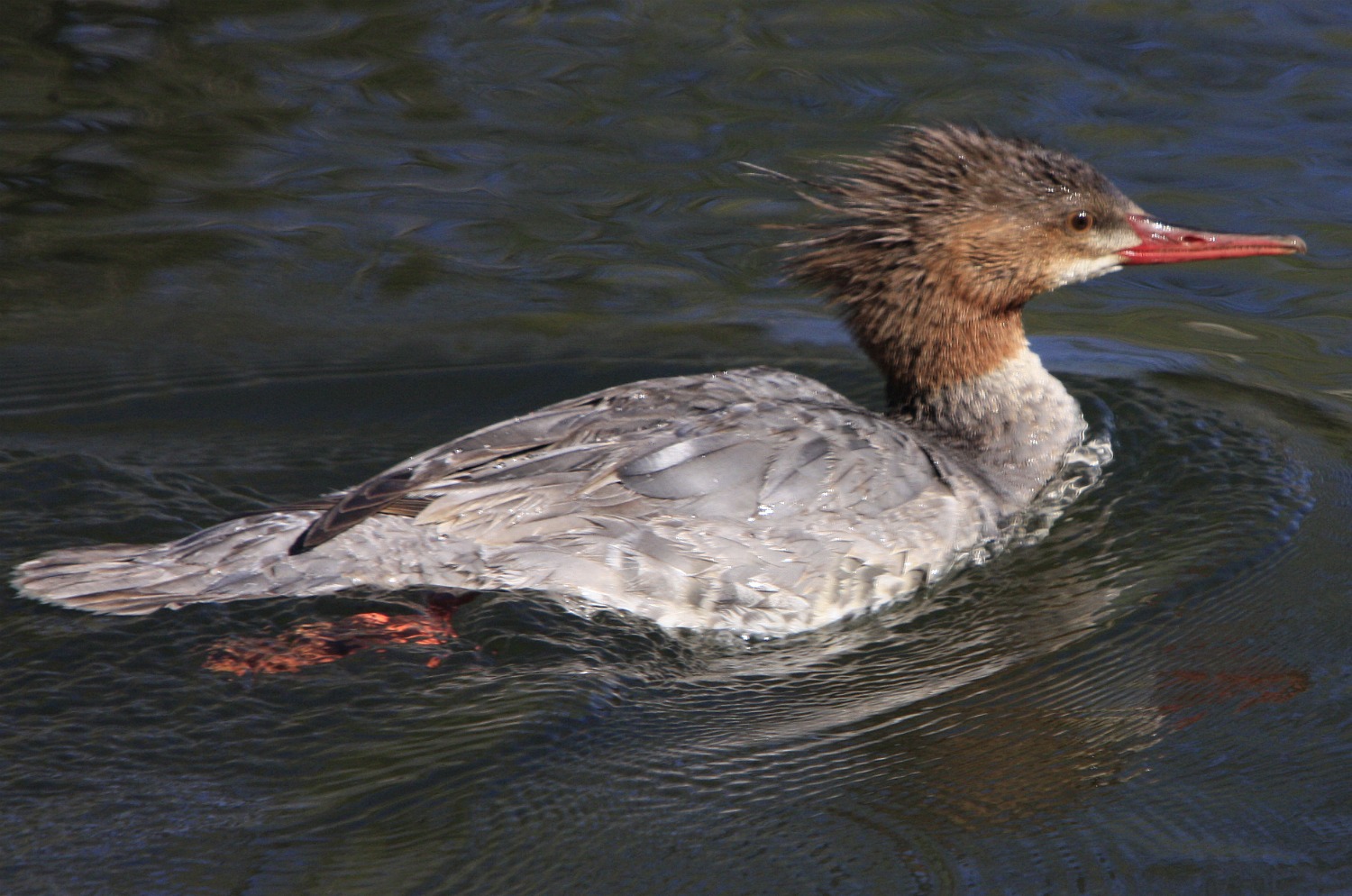
- Mallard
- Common Goldeneye
- Common Merganser
- Double-crested Cormorant
- Osprey
- Swainson’s Hawk
- Merlin
- Spotted Sandpiper
- Franklin’s Gull
- Rock Pigeon
- Belted Kingfisher
- Northern Flicker
- American Crow
- Common Raven
- Tree Swallow
- Northern Rough-winged Swallow
- European Starling
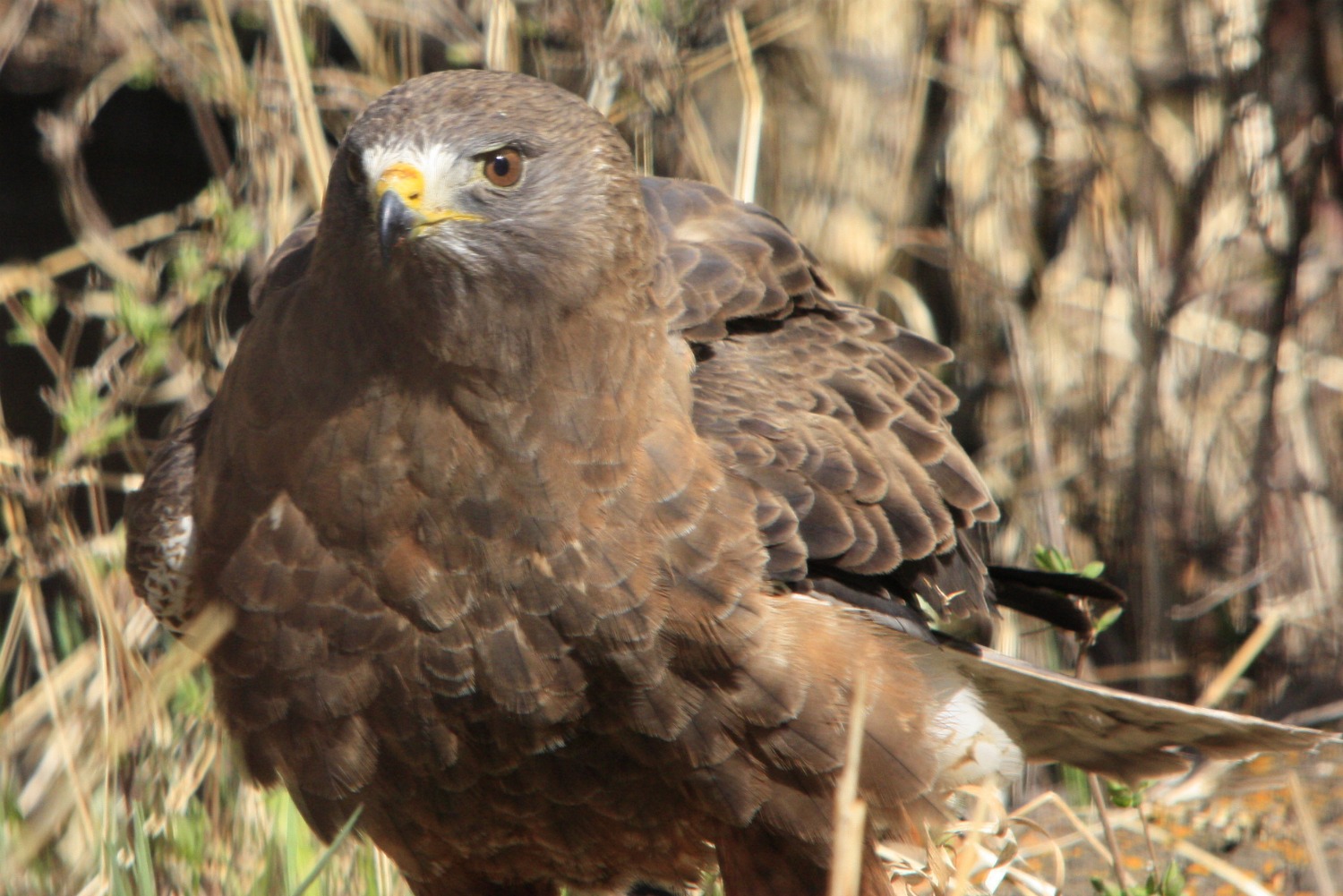
- Yellow-rumped Warbler
- Song Sparrow (heard 5 minutes before 8a.m.)
- Red-winged Blackbird
- Common Grackle
- Brown-headed Cowbird
At 10a.m., due to the frigid wind, we moved base to the Walker house ( we were there 10:30-12:15) where we added:
- Cooper’s Hawk
- Red-tailed Hawk
- Black-capped Chickadee
- Chipping Sparrow
- House Finch
All and all, not a bad morning to celebrate World Migratory Bird Day; a grand total of 29 species of birds from within the count circles. There were also some good birds from outside the circles; right after we called it a morning and took down the circle, an American Kestrel showed up. We also saw White-crowned Sparrow, White-throated Sparrow, House Wren, Warbling Vireo, Northern Pintail and a Barn Swallow. One of the highlights was a Swainson’s Hawk less than twenty feet off the path, with a kill. A story will follow shortly!
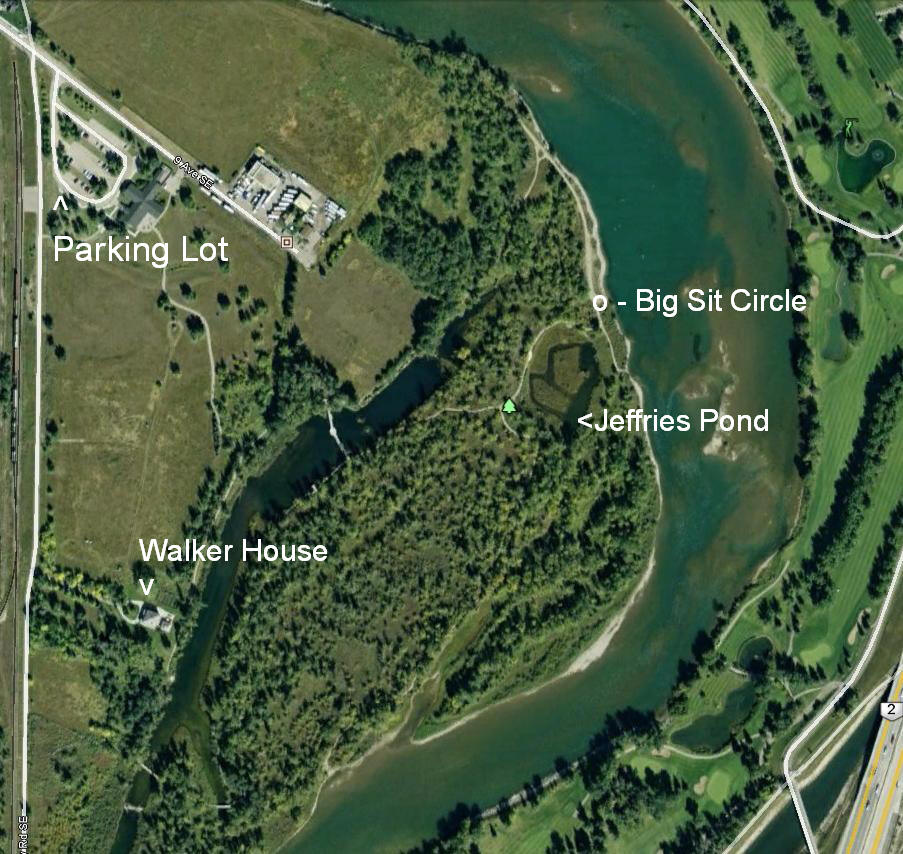
Posted by Matthew Sim
Bird Songs 101
Ever heard that beautiful song coming from deep inside a dense bush, but don’t know what exactly is the source of that amazing sound? You can check out this great site to help you match the song with the bird.
http://www.natureinstruct.org/dendroica/

The Blackpoll Warbler gives a very high-pitched song that can be inaudible at times.
Dendroica.com is a great site; whether you are a novice and just learning the songs, or you are a seasoned pro and brushing up for the spring migration. Photographs of the bird are provided on this site, as well as a description of the song or call and then the song itself. Once you have gotten familiar with the sounds, you can go out into the field with this newly-found or rediscovered knowledge, and be able to identify that beautiful song coming from deep inside the bush.
Posted by Matthew Sim
Down at the pond
Ponds can be a great place to see birds. They provide a home to not only birds, but many plants, mammals, insects, fish; the list could go on forever! The key factor is the water. Water attracts birds almost without fail; they need it to bathe, to drink and to keep cool. You can see birds at big lakes, such as Frank Lake, or you can see birds at small ponds, like the one close to my house.

A male Red-winged Blackbird calling. These birds are common at ponds that have rushes and reeds along the banks.
At my local pond, which sits on the Willow Park golf course, you can just about always see Mallards, Common Goldeneye, American Wigeon, Redheads and Red-winged Blackbirds. Lately, there has been a pair of Canvasbacks on the pond as well. Ponds where you are likely to find birds need to be the right types of ponds. Several characteristics define a good pond, including: moderately deep water, plenty of vegetation, both on and under the water, reeds around the banks and good, fairly undisturbed nesting spots. These factors can make ponds irresistible to many birds.

The male Redhead is a striking duck with its rust red head and dusky grey back.
Do you have a pond near you? If you do, go check it out, you never know what you might see!
Posted by Matthew Sim













